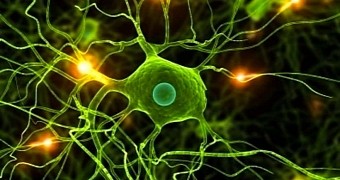Earlier today, scientists at the RIKEN Center for Developmental Biology in Japan announced that, with the help of human embryonic stem cells, they managed to grow fully functional three-dimensional brain tissue in laboratory conditions.
In a paper in the journal Cell Reports, the researchers argue that structures like the one they managed to engineer have the potential to pave the way for a better understanding of conditions that affect the brain, maybe even one day serve to replace the damaged tissues linked to neurological disorders.
Using stem cells to grow brain parts
Truth be told, embryonic stem cells have several times before been used to grow tissues and even entire organs in the lab, so the Japanese researchers' announcement isn't exactly breaking news.
Still, what makes their achievement noteworthy is the fact that the three-dimensional structure they grew was made up of fully functional neurons, which are not only tricky to obtain from stem cells but also reluctant to assemble in working tissues.
In the report detailing their work, the specialists explain that the human embryonic stem cells that they toyed with were exposed to growth factors that compelled them to develop and turn into specific neurons that are unique to the human cerebellum.
The growth factors that the researchers used in their experiments also coaxed the stem cells to get together, start communicating with one another and eventually form a functional, cerebellum-like three-dimensional structure.
It is understood that the researchers took 35 days to create this structure, which they then closely monitored for a few months to come. The scientists say that, 15 weeks following its creation, the lab-made cerebellum was responsive to various stimuli.
The importance of this study
As mentioned, the scientists imagine using three-dimensional brain tissue structures like the one they managed to create to gain a better understanding of how certain neurological disorders develop and affect individuals, maybe even find a cure for these conditions.
“The principles of self-organization that we have demonstrated here are important for the future of developmental biology,” study lead author Keiko Muguruma commented on the outcome of this series of experiments.
Furthermore, “Attempts to generate the cerebellum from human iPS cells have already met with some success, and these patient-derived cerebellar neurons and tissues will be useful for modeling cerebellar diseases such as spinocerebellar ataxia.”

 14 DAY TRIAL //
14 DAY TRIAL //